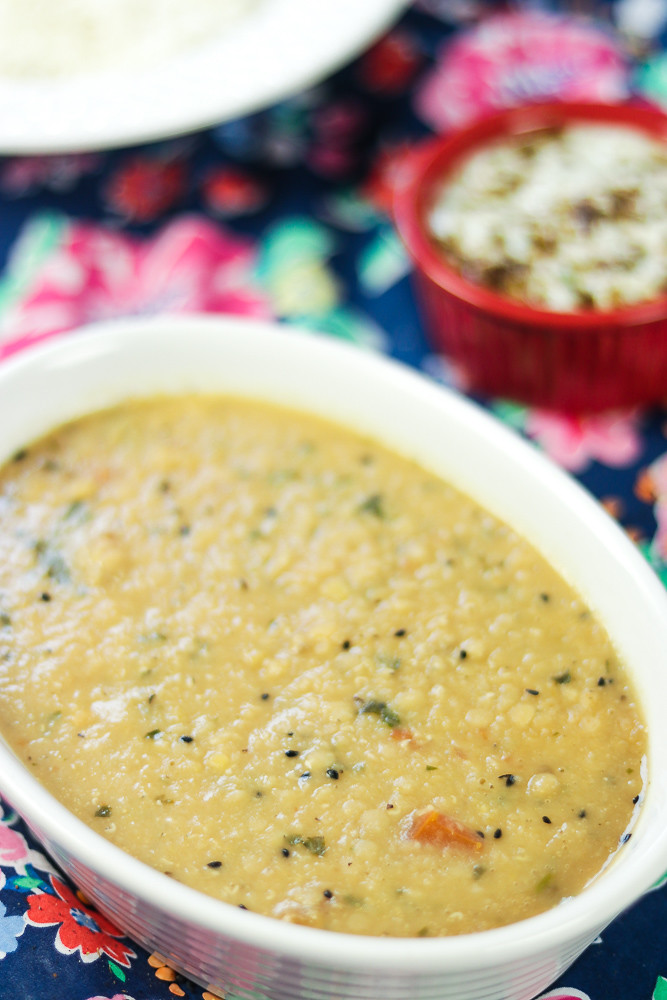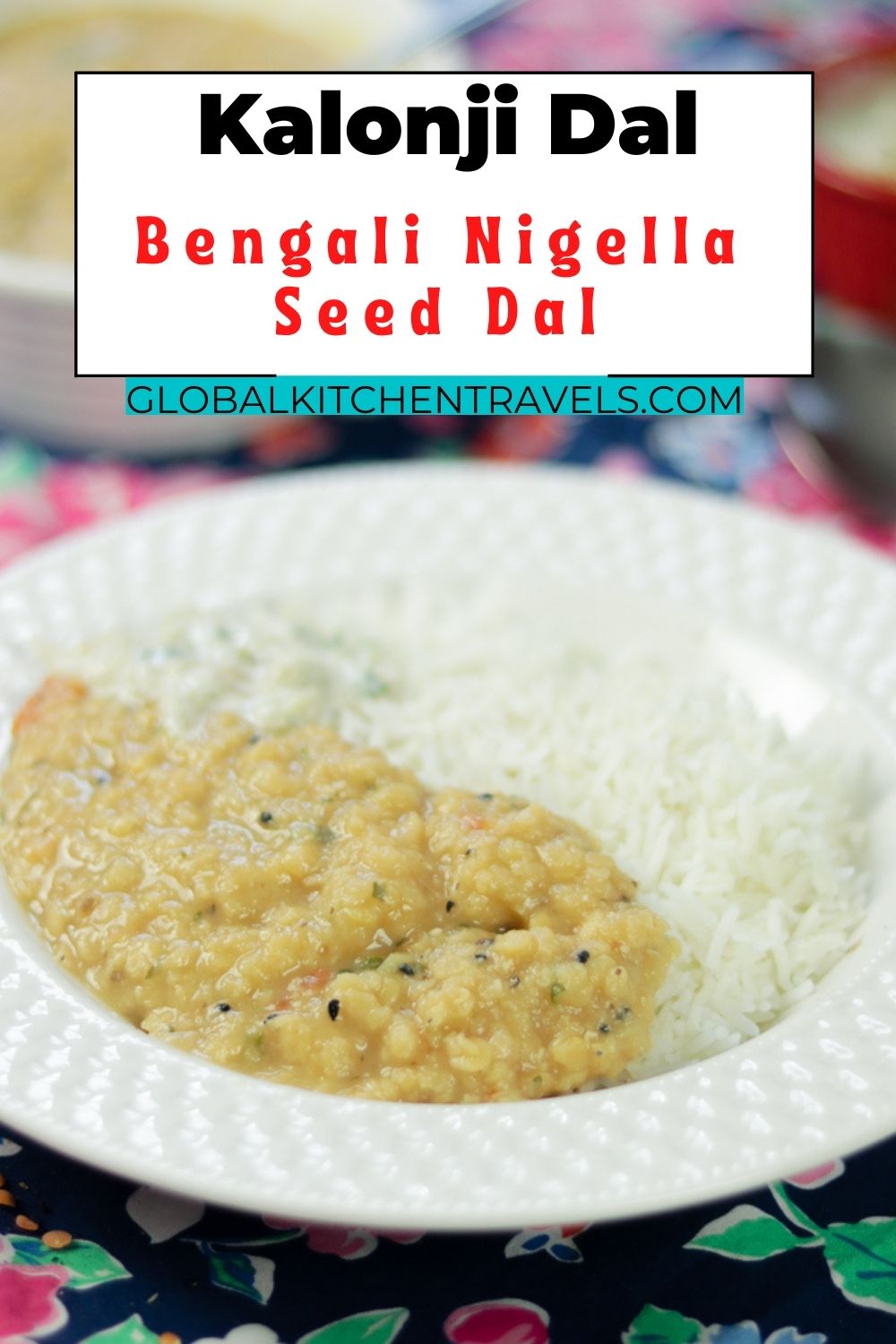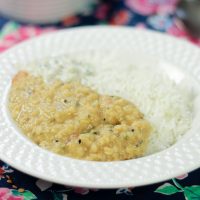Last Updated on December 14, 2020 by Chef Mireille
Kalonji Dal – Nigella Seed Dal
Also known as black onion seed, this simple Bengali style dal infused with just kalonji, chillies and tomatoes is quick and easy to compliment all of your Indian meals.

This post may include affiliate links.
Nigella seeds, also known as black onion seed or kalonji, are used frequently in Indian and Middle Eastern cultures. Despite its many health benefit, it is difficult to find in America, unless you go to one of these cultural markets or gourmet/health food markets.
It is not a standard spice on our supermarket shelves, although it should be!
Kalonji Health Benefits
Kalonji – Nigella Seed has many health benefits that include helping to combat some conditions and diseases that include the list below
- Asthma
- High Blood Pressure
- Pancreatic Cancer
- Malaria
Indian food, just like food of any nation, is regional. Even in some parts of India, kalonji is unknown or little used. However, this spice is used often in Bengali cuisine.
Bengali Cuisine
In addition to kalonji, other spices that characterize Bengali cuisine are cinnamon, bay leaves, mustard oil and poppy seeds.
Spices are usually left whole in Bengali food and rarely ground.
Also fish and seafood play a major part of a Bengali daily diet. As they are a coastal state, they have a wide variety of fish available in their waters.
Bengali History
Bengal lies on India’s northeastern coast. This state was the stage of many revolutionary activities during India’s fight for independence. Kolkata, (formerly Calcutta), was at the center of India’s quest to end England’s British Raj regime.
As India earned it’s independence, Bengal was divided into West Bengal (India) and East Bengal (Pakistan). The state continued to be filled with violence and unrest for the following decades as East Bengal achieved full independence and became the country of Bangladesh in 1971. Conflict still continued to plague the region for many years. Stabilization finally was achieved when parliamentary democracy occurred in 1991.
Now that you know a little history about the region, it’s time to dive deep into Bengali cuisine. To that end, check out some of my other Bengali Recipes before we get to today’s Kalonji Dal – Nigella Seed Dal.
Bengali Recipes
- Lao Bori – Bottle Gourd Curry
- Chingri Macher Kalia – Shrimp Potato Curry
- Phulkopir Razala – Bengali Cauliflower Yogurt Curry
- Aloo Posto – Bengali Potato Poppy Seed Curry
- Green Pea Paratha
- Bengali Thali
- Borar Jhol – Lentil Dumplings in Tomato Gravy
- Borar Jhal – Lentil Dumplings in Mustard Gravy
- Chingri Kalia – Shrimp Onion Curry
- Cholar Dal – Coconut Milk Dal
- Panta Bhat – Rice Salad
- Achari Paratha
- Orange Kheer – Orange Milk Pudding

This creamy dal can be part of a simple Vegetarian meal with rice and raita!

Kalonji Dal – Nigella Seed Dal
Ingredients
- 2 cups masoor dal red lentils
- 4 cups water
- 1 tablespoon mustard oil
- 1 1/2 teaspoons black onion seed/nigella black onion seed
- 1 tomato chopped
- 2 green chiles thinly sliced
- 2 tablespoon cilantro finely chopped
- salt to taste
Instructions
- Combine lentils and water. Bring to a boil. Reduce to a simmer and cook until lentils are tender, about 15 minutes.
- Using one of my favorite kitchen gadgets – my trusty immersion blender, puree the cooked lentils about 75%.
- In a skillet, heat oil. Add kalonji and chiles and cook for 1 minute. Add tomatoes and cook for about 3-4 minutes, until tomatoes turn soft and mushy.
- Add to dal with cilantro and salt.
- Stir to combine.


DO YOU YUM? SAVE IT BELOW!
YumDon’t forget to visit the RECIPE INDEX with over 1000 recipes from around the world including lots of Vegetarian Recipes and Gluten Free Recipes!




Simple and comforting dish..
Love the dal its simple and comfort food.
Yummy! We were looking for a recipe that featured black cumin, or ‘ketach’ as it is called here, and vegan also. I made it without the oil – it was delish.
Sorry, that’s ‘ketzach!’
hi – where are you from where it is called ketach? I’m always interested to learn about other cultures.
We live in Israel. Ketzach is easily available. We recently learned about all its great health benefits, and were so happy to find your quick and easy (and tasty!) dahl recipe. I am making it now for Shabbat!
Shabbat shalom from Israel.
Shabbat Shalom. I actually used to work for Hadassah here in NYC so have lots of Israeli friends so welcome to my website!
This is quite a flavorsome nigella seed dal. I am aware about panch phoron tempering mixture in Bengali cuisine but did not know that tempering could be done only with nigella seeds as well. Today I plan to make this nigella seed dal. Will serve it with rice or roti. Nice post!
It is so simple but has so much flavor. I am sure you gar going to love it.
A simple but flavourful dal preparation. Love using masoor dal but haven’t made it with kalonji. A good recipe to try out. So comforting with some rice.
yes it is the perfect comfort food with rice.
I use panch phoron tempering for sabjis / dry sautes, but this nigella seed with masoor dal is very tempting and I would love it with some steamed rice / roti
I love the flavour of nigella seeds. Usually I add it to rice or make a chutney out of it, Glad to note I can add that to dal and make it a comfort meal too.
Kalonji seeds have their own unique flavor profile, a very important ingredient in Bengali Cuisine .using Nigella seeds for tempering masoor dal is a new thing to me.will certainly temper my dal tonight with Nigella seeds